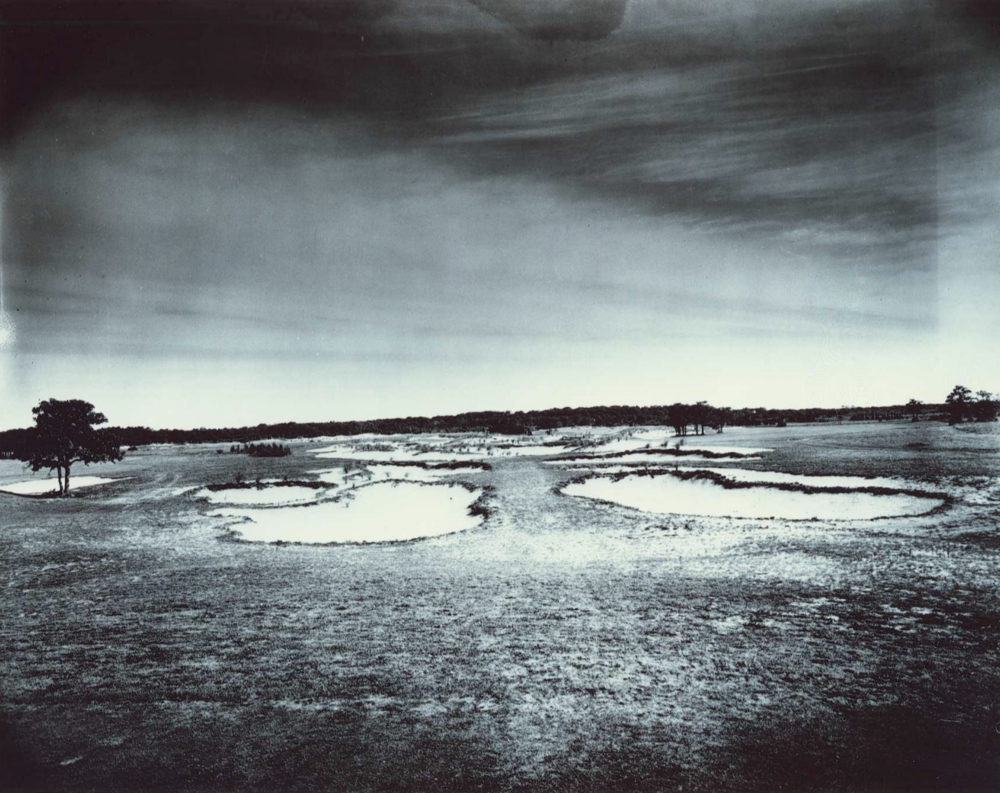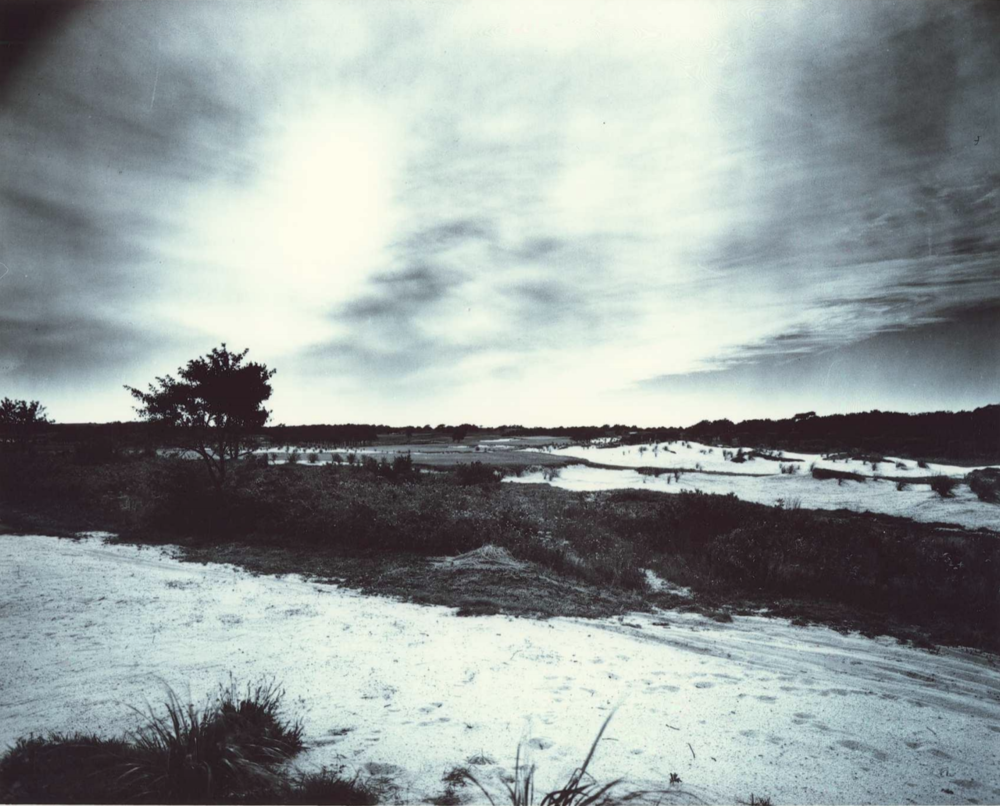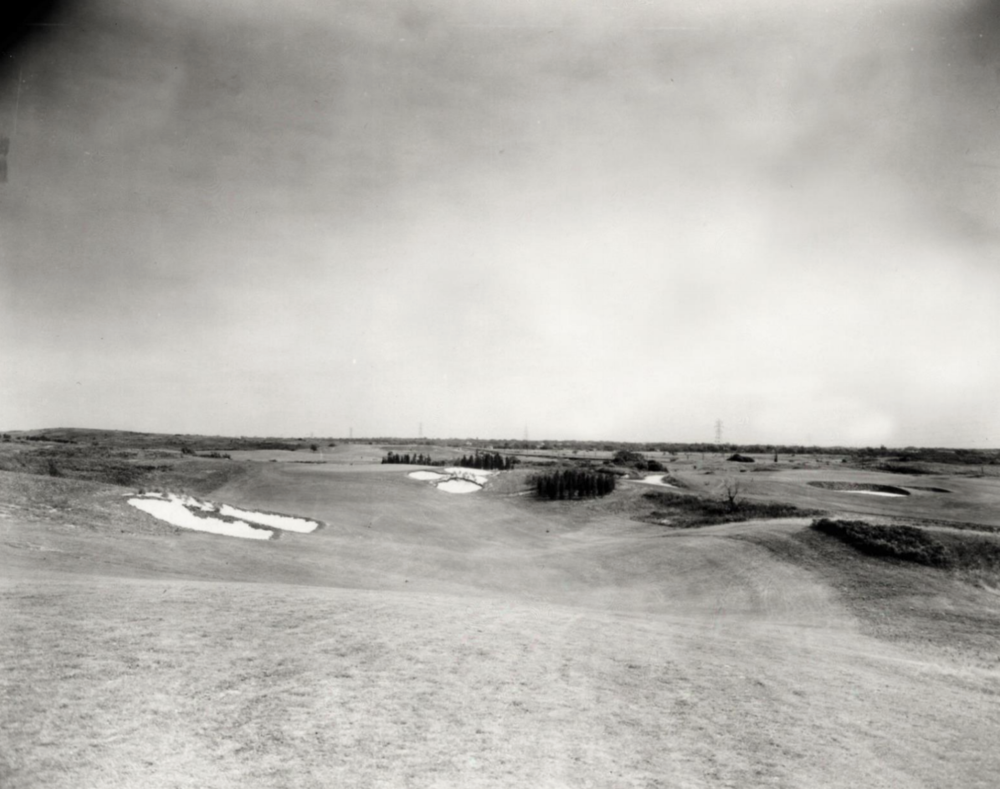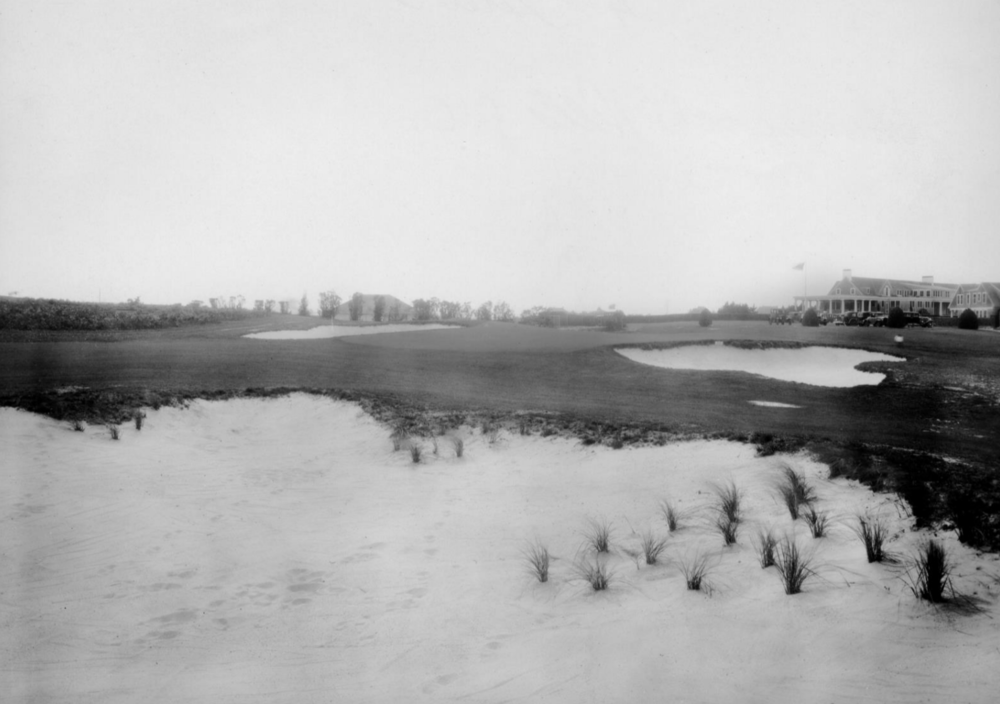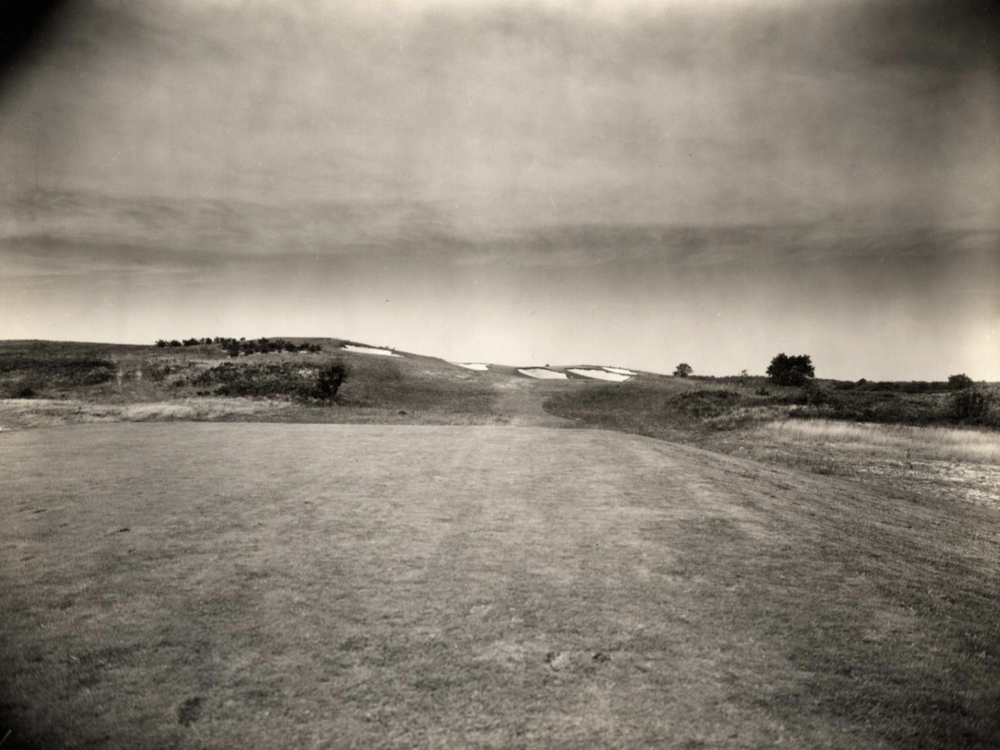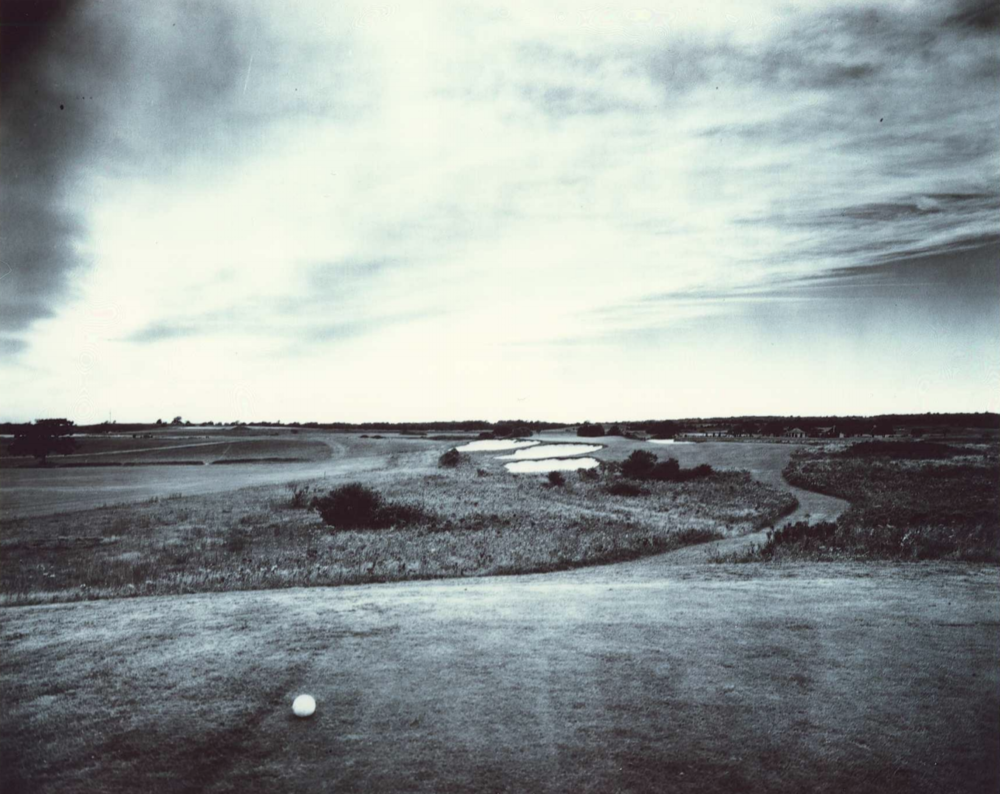Getting back the Flynn
Shinnecock Hills is one of the greatest golf courses in the world. It hasn’t fallen outside Golf Digest’s top 10 in the United States since 1985. So why would the course undergo dramatic, wholesale changes over the last decade?
The dirty little secret about the 2004 U.S. Open is that Shinnecock Hills was a hodgepodge of a golf course. The course that Flynn built had been tinkered with heavily. Fairways and greens had shrunk, trees had been planted over the years, and even the fairway grass had changed from fescue to rye. The 2004 version of Shinnecock Hills was miles away from its best self, the 1931 William Flynn version.
Photo Credit: Shinnecock Hills Golf Club
In 2004, Shinnecock was a one-dimensional, monotonous slog. Its members knew this. They understood that the 2004 course was not a faithful version of William Flynn’s design. Off the tee, 25-yard wide fairways called for long and straight hole after hole. The penalty for a miss was thick rye grass rough that required chip outs. The minuscule greens left the USGA with few pin positions. The thick rough surrounding the greens corralled approach shots that missed, blurring the line between good and average. 2004’s U.S. Open was a strict test of execution.
This year’s championship showcases the changing philosophy in golf, a throwback to the game’s roots. Unlike its 2004 iteration, this golf course requires thought and execution. Shinnecock Hills will provide a greater reward for good shots and punish average ones. Fescue fairways are back, and the result is an improved playing surface for firm and fast conditions. Wider fairways should create more playing options and bring Flynn’s fairway bunkers back into the line of play. Larger (but slower) greens will give the USGA more tucked pin positions. Short grass around the greens will repel misses down hills yards away from their target.
In the end, Shinnecock Hills will require every type of skill to win. That’s what you want your U.S. Open to do. This year’s version of Shinnecock will be like solving a complex riddle as opposed to a challenging math equation.
All about the grass
To the casual golf fan, turf grass is not a sexy topic, but its importance cannot be overlooked.
Shinnecock has switched back to fescue from rye grass. The course was fescue originally, but was (insanely) re-seeded with rye in the run-up to the last U.S. Open. The decision to go back to fescue should be applauded. It’s become a logical choice for northern courses looking to play firm and fast (i.e. Bandon Dunes, Sand Hills, Sand Valley, etc.). The rye grass used in the 2004 championship was slow and water-dependent. It grew thick punishing rough but needed water. When the USGA attempted to speed things up the week of the championship, it died.
Fescue is the fastest-playing surface possible in this climate. The speed combined with Shinnecock’s snaking fairways will require players to hit the proper line and distance to find fairways. While there isn’t a ton of it, the fescue rough should also be an upgrade. Fescue tends not to be as as thick and punishing as rye grass, but thin fescue can sometimes create other challenges. It is notoriously unpredictable. Fescue rough can entice players to try the low-percentage shot from a disadvantaged position. We may see thrilling recoveries and also more shambolic head-on collisions.
All world day at Shinnecock, course is dialed in. Really excited to see the best take on the expanded greens. No weak holes. pic.twitter.com/1EISAlIrNN
— the fried egg (@the_fried_egg) June 3, 2018
More talk about width
I have occassionally, periodically, once-in-a-while touched on the topic of width and tree removal before. Shinnecock Hills has removed a bunch of trees – and that’s great. As Michael Clayton points out below, the course is wider:
— Michael Clayton (@MichaelClayto15) June 10, 2018
Some U.S. Open fans may lament the width – favoring brutal, unforgiving rough that’s practically impossible to avoid. This, of course, is nonsense. The tree removal, fairway expansion and enlarged greens at Shinnecock Hills have reestablished the strategy and intent of the golf course. Depending on the day’s wind and pin position, different plays and positions will be rewarded. In 2004, many of Shinnecock’s fairway bunkers sat yards off the fairway in the rough. Flynn designed courses where the ideal angle of approach was often next to bunkers. The fairways will now run right into the bunkers, bringing the line between perfect and disaster closer.
One of the best concepts that width allows for is the idea of “delayed penalty”. A shot can appear great because it finds the fairway but is actually dead. It might not be a full shot, and angles aren’t accounted for with strokes gained statistics, but these small disadvantages will add up over time. Take the short par-4 8th, where taking the more aggressive line up the left will yield a wide open look at the angled green. Playing safe off the tee to the right finds a poor angle to approach the green with low visibility. From the right, players have a thin margin for error and have to deal with the doubt of a semi-blind shot.
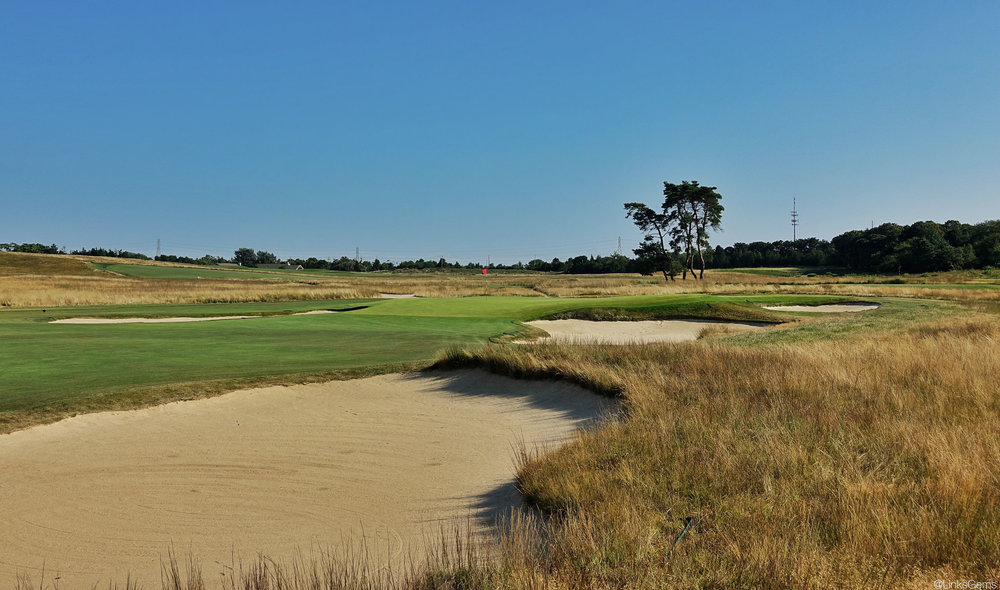
The view of the 8th green from the right side - Photo Credit: Jon Cavalier @linksgems
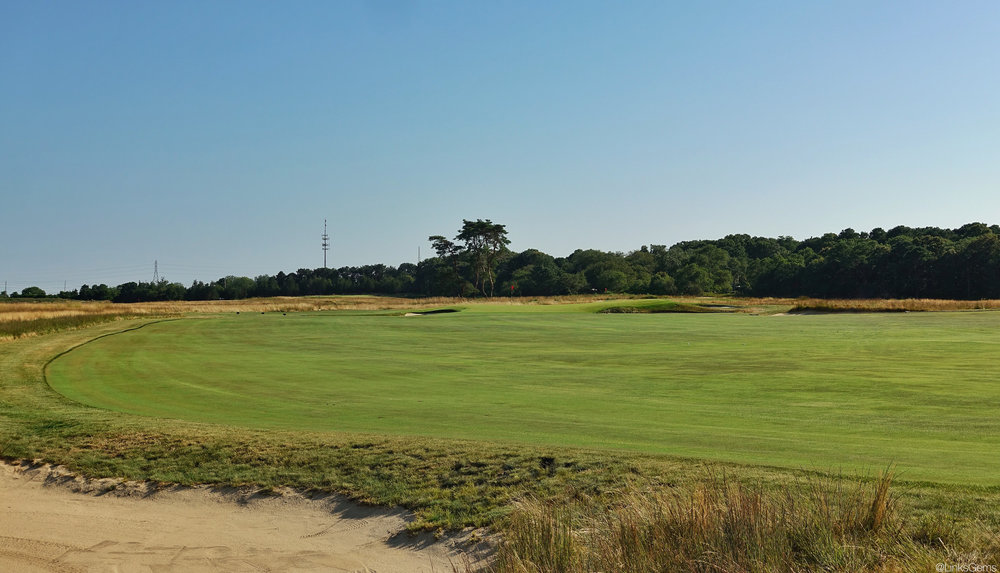
The view of the 8th green from the left side of the fairway - Photo Credit: Jon Cavalier @linksgems
There is no chance the greens at Shinnecock Hills will play as dry and fast as the famously controversial greens of 2004. Instead, recapturing green sizes will give the USGA more pin positions that are closer to green edges and internal contours. My favorite example comes on the long par-4 14th. The green had lost its most interesting elements over the years, the small shelves on the right and left sides. Thanks to the green expansion, they are back and pinnable for the championship. These pins will require exceptional shots to have good birdie putts. Playing safe to the middle of the green will leave severe uphill putts.
Recapturing green sizes will add a bevy of new pin positions for the USGA to choose from. The long par-4 14th will have two new terrific locations on shelves on the right and left sides. In the 2004 US Open these locations were covered up by rough.
Recapturing green sizes will add a bevy of new pin positions for the USGA to choose from. The long par 4 14th will have two new terrific locations on shelves on the right and left sides. In the 2004 US Open these locations were covered up by rough. pic.twitter.com/VBSTvWq7V2
— the fried egg (@the_fried_egg) June 11, 2018
New tees
To combat the distance problem in golf, Shinnecock has been lengthened to 7,445 yards from 6,996 in 2004. New tee boxes were added on holes 3, 4, 5, 6, 8, 9, 14, 16 and 18. This added distance should help provide the variety of approach shots that Flynn intended with its original design. Most importantly, the club and USGA worked closely with architecture firm Coore and Crenshaw to maintain the proper playing angles from the new tee boxes.
The most heralded restoration of this era is Pinehurst #2, which went under the knife to restore its natural roots. The impetus for Pinehurst’s restoration came from a need. Rounds were declining at the resort and its ranking was too. In 2009, Pinehurst slipped to 32 in Golf Digest’s rankings, the first time it was outside the top 20 in over 20 years. It was monumental for a resort to shut down its prized course for a year and go back to its original design.
Shinnecock’s refresh is in the same realm of importance. Unlike Pinehurst, Shinnecock’s need for change wasn’t apparent from the rankings. In the last 20 years, 6th is the lowest that Shinnecock Hills Golf Club had fallen in Golf Digest’s list of America’s 100 Greatest Golf Courses. Since the 2004 U.S. Open, the lowest it ranked is 4th. Shinnecock’s changes are more about not resting on their laurels and returning golf to the original intent of the game. A game that’s challenging, littered with strategic choices and interesting recovery shots. A game that’s fun to watch.
If you missed part I of The skinny on Shinny, check it out here. Part three will dive into the strategy and architecture behind some of Shinnecock’s holes.


 by
by 